Lumen help
Adding a property‑based setting to a property
When you add a property to a configuration, you have to add at least one property-based setting (traffic type). You can add additional property-based settings at the same time, but you can add more later using the instructions below. Remember that the CDN applies these property-based settings to all requests to any alias defined within the property.
- Sign in to Media portal. (Get help resetting your password)
- From the main menu, select My Services > Caching.
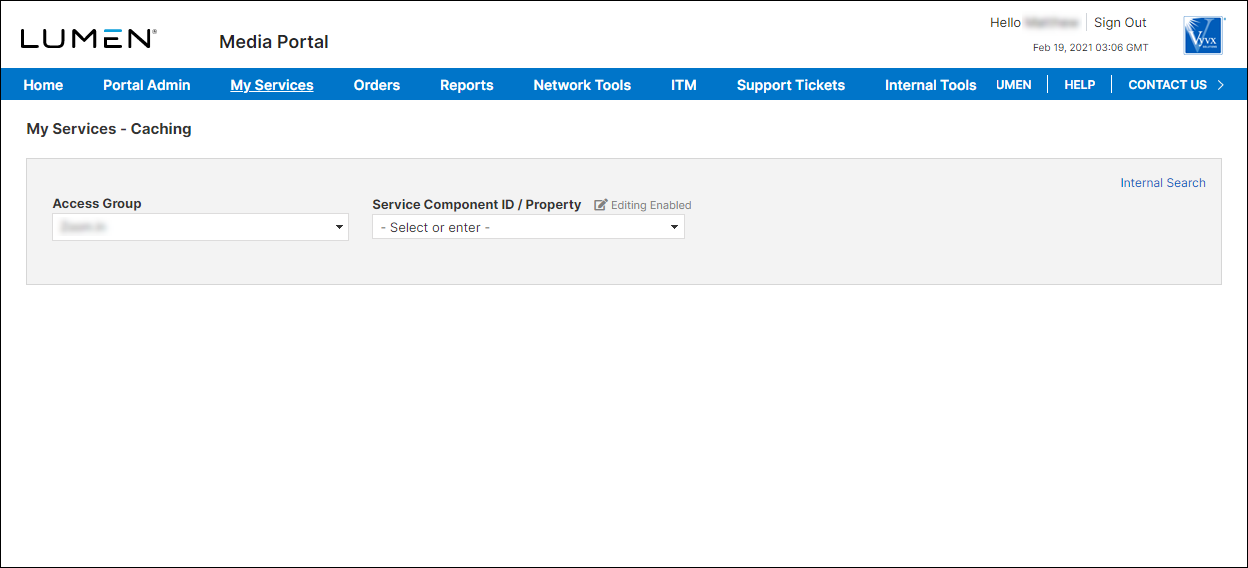
- From the lists, select the access group and SCID (service component ID) you want to work with.
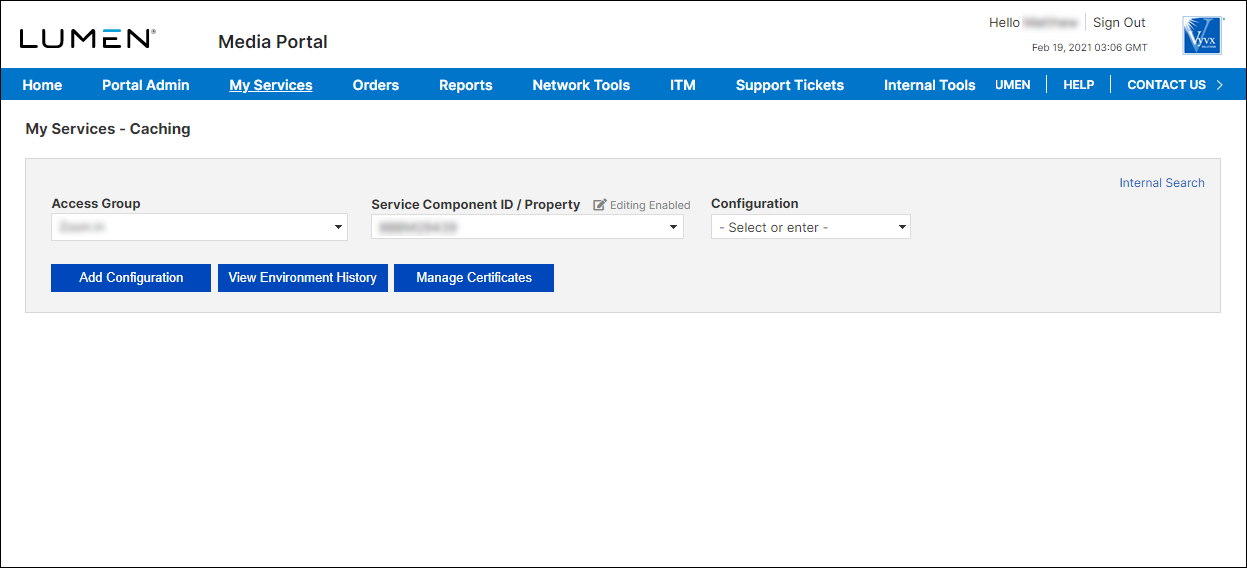
- From the list, select the configuration.
To add a property-based setting to a property:
- From an open configuration, click Edit Configuration.
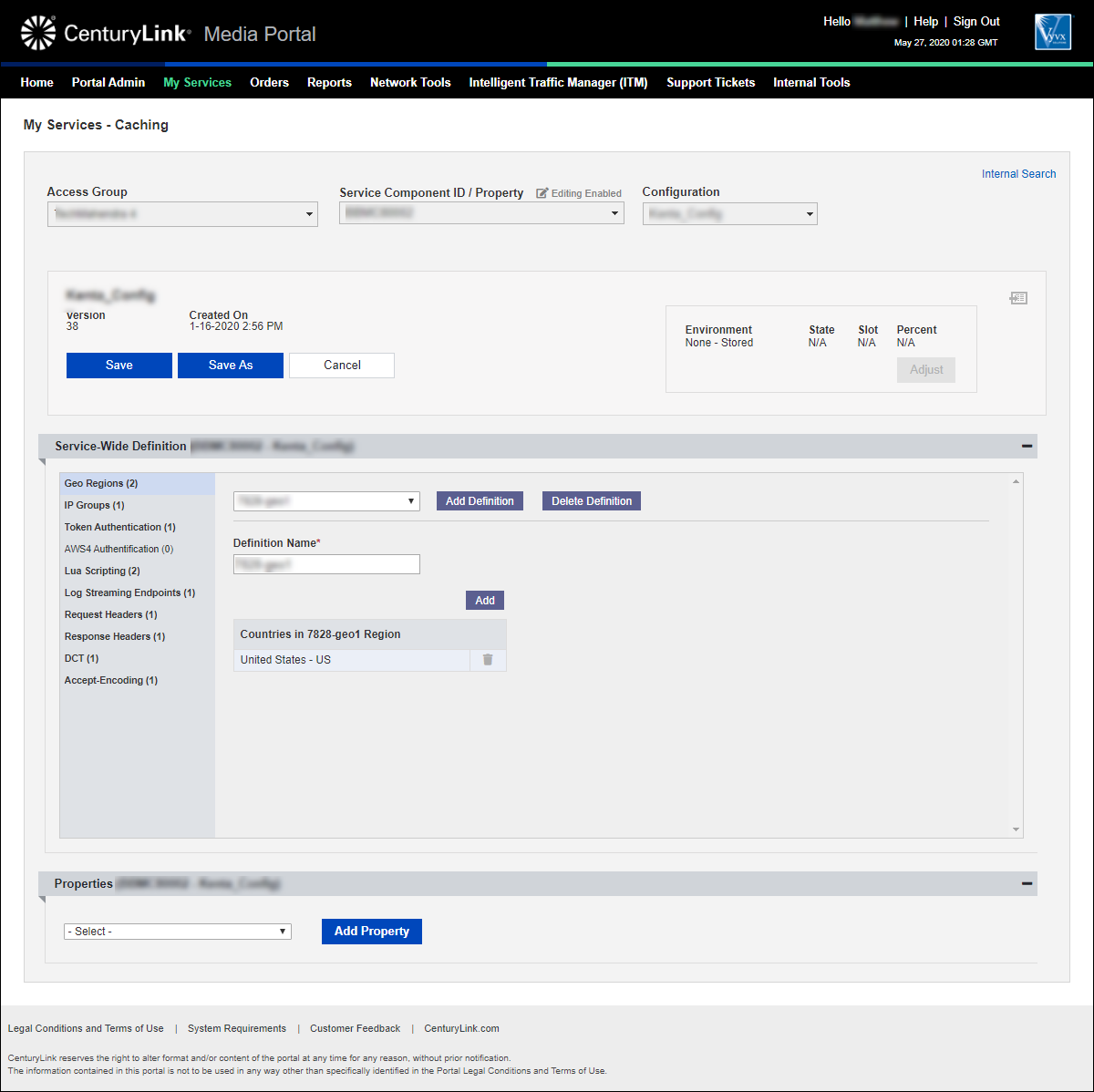
- From the Properties list, select the property you want to add a property-based setting to.
Media portal displays the information for the property. In the Property-Based Settings section, Media portal lists any property-based settings currently on the property.
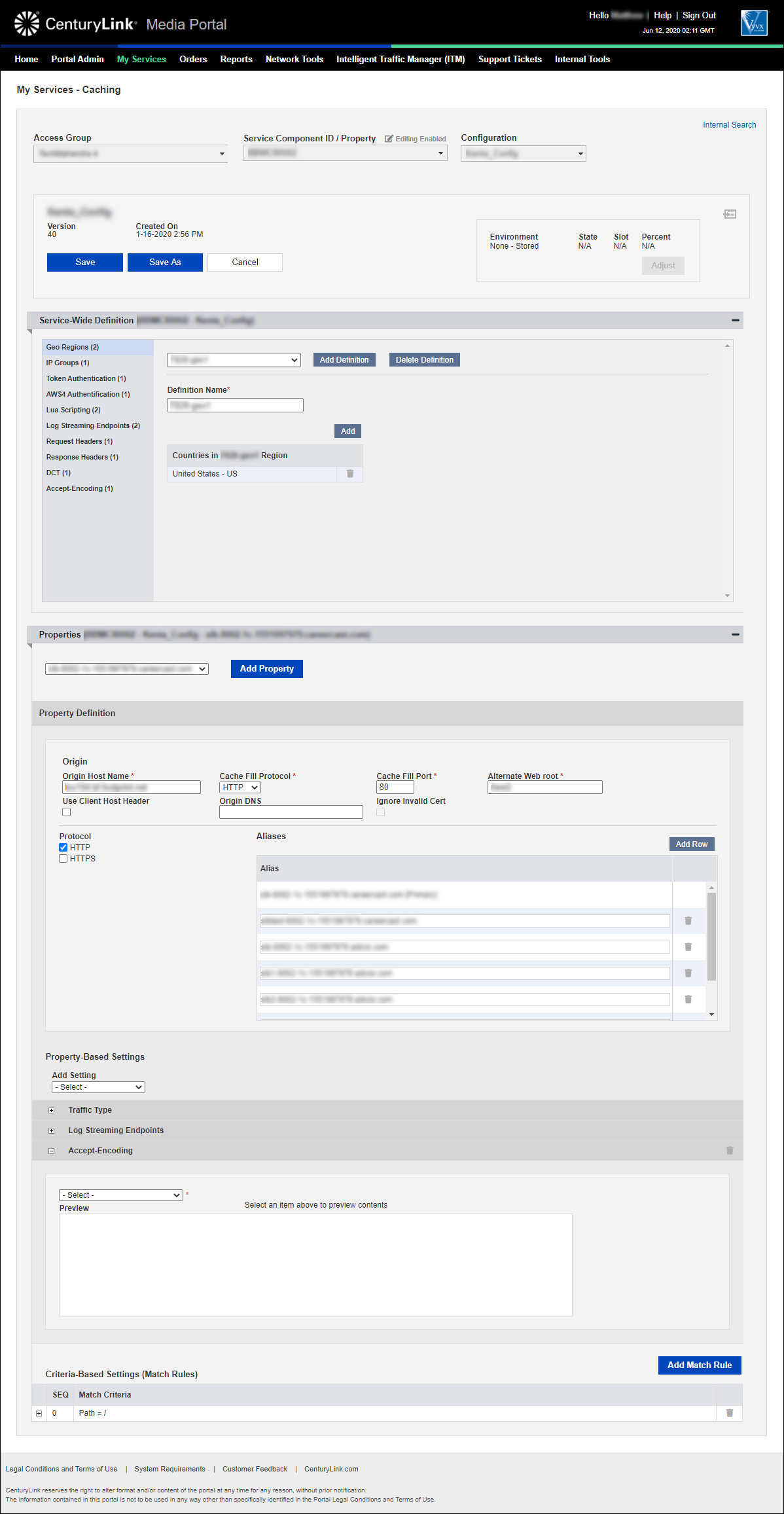
- From the Add Setting list (in the Property-Based Settings section), select the type of property-based setting you want to add to the property. Use the sections below to learn more about how to add each type of property-based setting.
By default, encodings are normalized to either Identity or Gzip. Any other encodings are automatically dropped from the request. However, you may override this by creating an accept-encoding definition that is attached to a property-based setting.
1. From the Add Settings list, select Accept-Encoding.

- From the list, select the accept-encoding definition you want to apply as a property-based setting.
You can apply AWS4 authentication definitions at the property level (creating a global policy). Learn more about viewing or adding an AWS4 authentication definition.
- From the Add Settings list, select AWS4 Authentication.
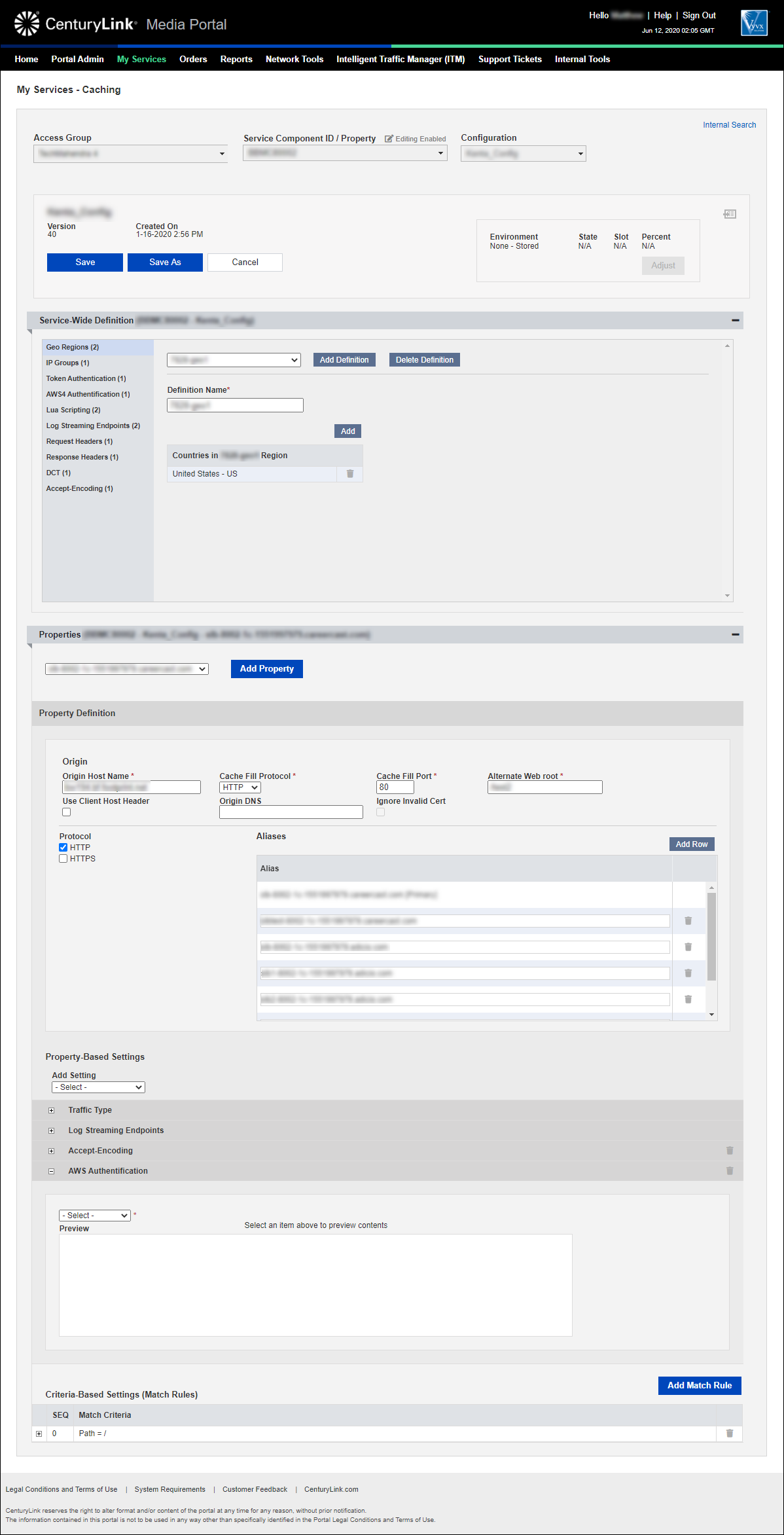
- From the list, select the AWS4 authentication definition you want to add as a property-based setting.
Dynamic content transformation (DCT) allows your origin server to serve a single variant of an object, either identity or gzip, and have the Lumen CDN dynamically transform that content into the desired variant.
- From the Add Settings list, select DCT.

- From the list, select the DCT definition you want to apply as a property-based setting.
If you have enabled Log Streaming, the Log Extras setting allows you to automatically add static and dynamic data to the log streaming record. Dynamic content can be any number of internal variables. For example, header lines sent to a client have the prefix “sent_http_”, so to capture a custom header’s value in the client request (e.g., cdn_session), you would use $sent_http_cdn_session. If you are unsure of how to format dynamic Log Extra values, please contact CDN Support.
Any Log Extras you create must be notified to CDN Support before they will begin appearing in the log stream.
- From the Add Settings list, select Log Extras.
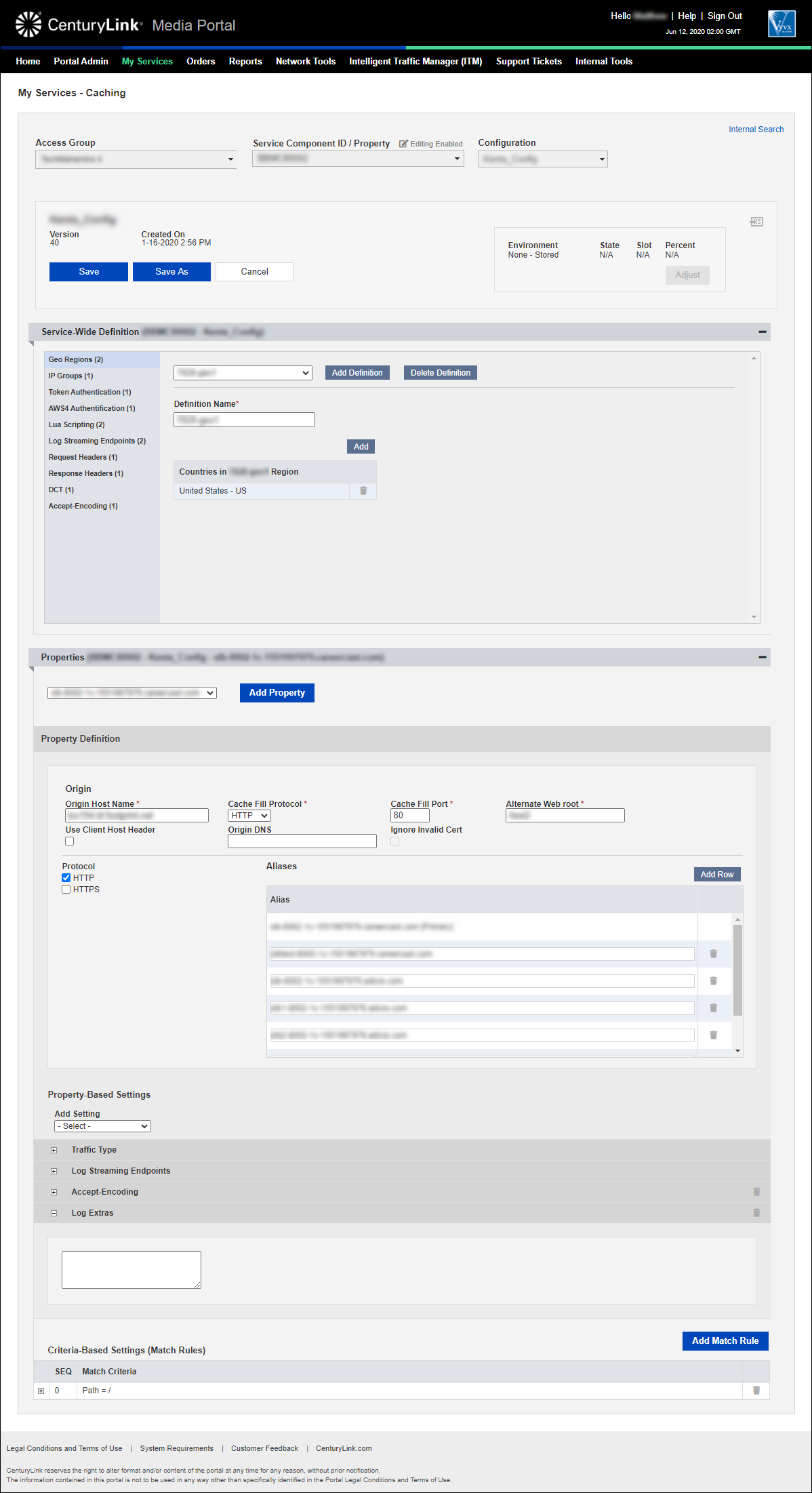
- In the field, add the Log Extras you want the CDN to send with the log.
Use log-streaming endpoint definitions to specify when, where, and how you want log information posted to your endpoint. Logs are batched in a JSON-formatted payload and posted to your endpoint in near real time (<5 minutes).
- From the Add Settings list, select Log Streaming Endpoints.
- From the list, select the log-streaming endpoints definition you want to add as a property-based setting.
You can apply Lua scripting definitions at the property level (creating a global Lua policy). Learn more about viewing or adding a Lua scripting definition.
- From the Add Settings list, select Lua Scripting.
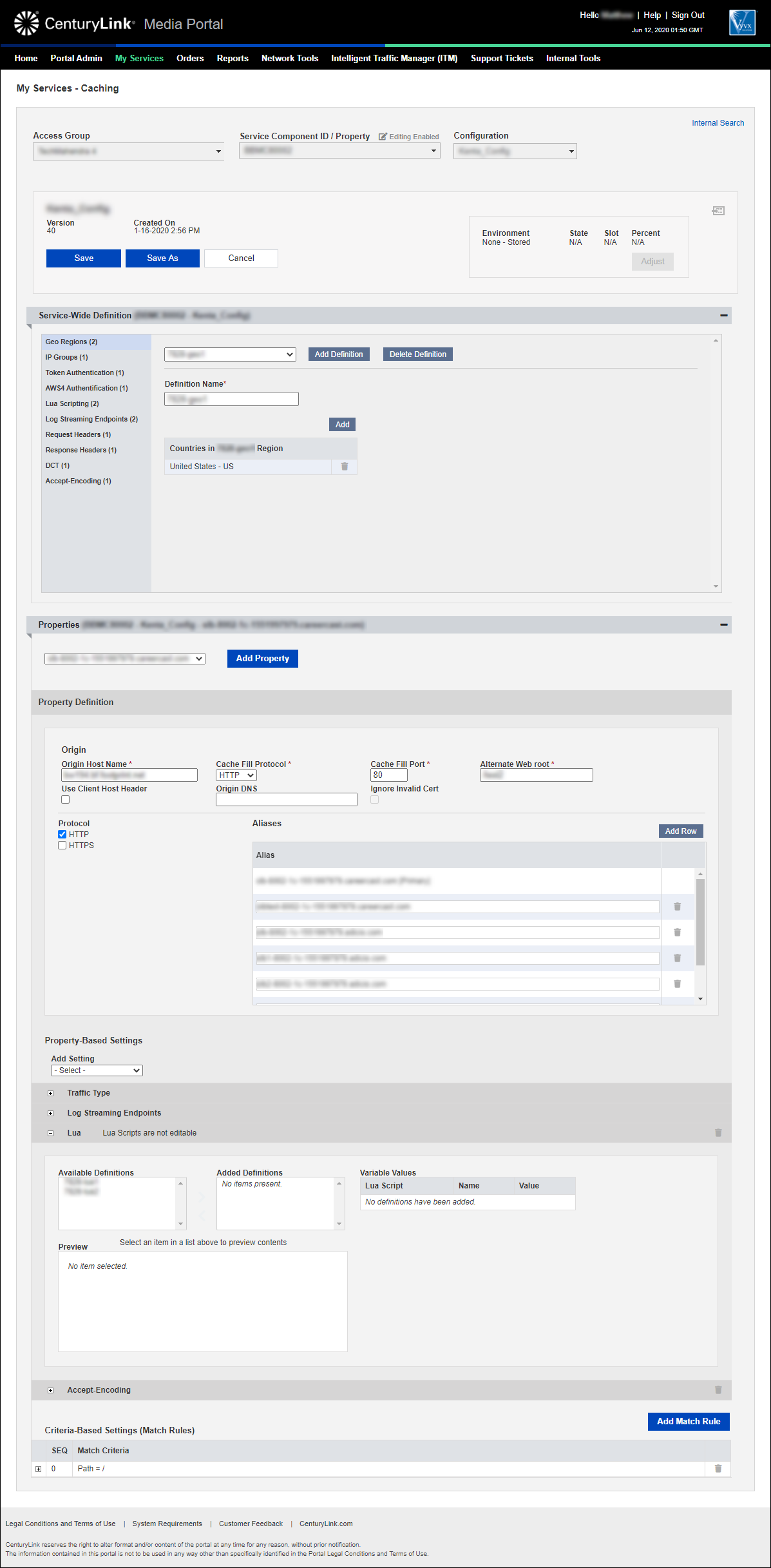
- In the Available Definitions section, select the Lua-scripting definition(s) you want to add as property-based settings, then click the arrow to move the definition(s) to the Added Definitions section.
- If you need to edit or add other definitions, properties, or match rules, continue editing the configuration without saving. (Saving the configuration creates a new version.) When you're done editing the configuration, continue with step 5.
- Click Save (above the Service-Wide Definition section). You can also click Save As to save the configuration under a new name.
- If needed, add any notes to describe the changes you made.
- Click Save again.
Media portal saves the configuration.
Learn more about
Media portal
Explore Media portal
Top Media portal articles
- Adding a configuration
- Adding a match rule to a configuration
- Adding a property to a configuration
- Adding a token authentication definition to a configuration
- Promoting a configuration to an environment
- Adding a new certificate
- Editing a configuration
- Adding a DCT definition to a configuration
- Viewing CName information for aliases on a configuration
- Adding an accept encoding definition to a configuration




